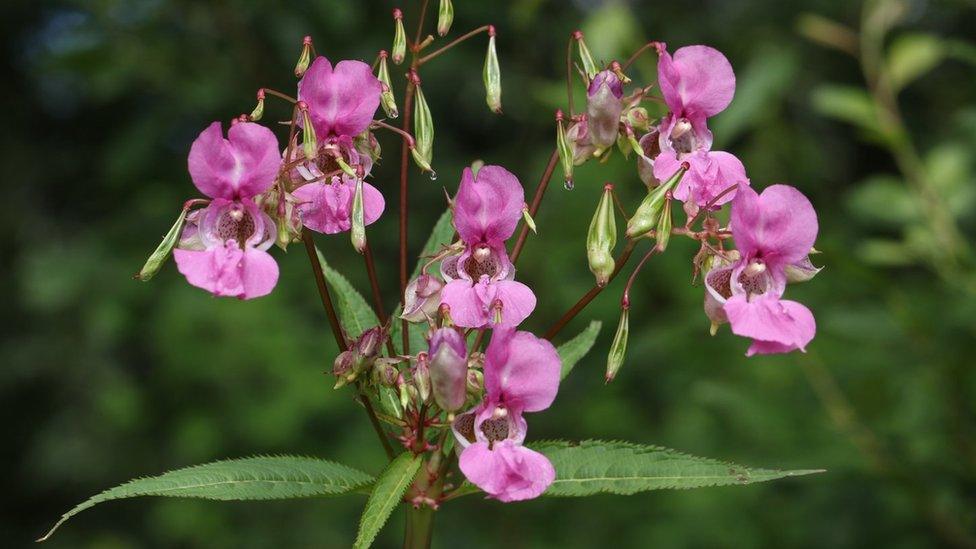Call to check land in Guernsey for invasive Himalayan balsam plant
- Published

Himalayan balsam is fast-growing and spreads quickly, invading habitat at the expense of native flowers
People in Guernsey who have access to gardens or fields are being asked to check them for an invasive plant.
Agriculture, Countryside & Land Management Services (ACLMS) said staff had spent two years trying to eradicate the non-native Himalayan balsam.
It said evidence over the summer suggested eradication efforts had paid off but it was concerned there could still be some "dotted around".
It said it wanted any plants found to be reported so they could be destroyed.
ACLMS said "thousands" of plants had so far been removed.
But it added it was concerned that "there are likely to be some specimens still dotted around the island, perhaps in people's gardens or fields".
It said: "At this time of year, the plants will be starting to set seed, so islanders are encouraged to check their land and report any specimens as soon as possible.
"We really don't want to allow this species to become established on Guernsey as it could easily become a significant problem for our wildlife and for landowners."

Himalayan balsam
Himalayan balsam is a non-native invasive species which has become naturalised along riverbanks and wasteland
It tolerates low light levels and shades out other vegetation, gradually impoverishing habitats by killing off other plants
Its explosive seed pods aid its spread by sending the seeds into the river, causing further dispersal downstream
Each plant can produce up to 800 seeds and ripe seedpods can shoot seeds up to 22ft (7m) away
Seeds can remain viable for two years
Source: Royal Horticultural Society

Follow BBC Guernsey on Twitter, external and Facebook, external. Send your story ideas to channel.islands@bbc.co.uk, external.